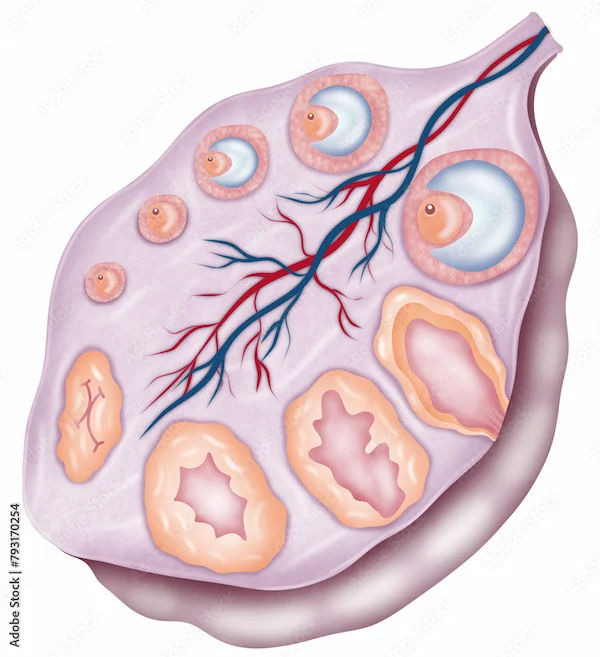Cyclic Bleeding After Supracervical Hysterectomy
Learn why cyclic bleeding can occur after a supracervical hysterectomy, what symptoms to watch for, and how to manage it effectively with expert guidance.

Written by Dr.Sonia Bhatt
Last updated on 5th Jul, 2025

Introduction
If you’ve undergone a supracervical hysterectomy (a surgery where the uterus is removed but the cervix is left intact) and are experiencing cyclic bleeding (period-like bleeding at regular intervals), you may have questions or concerns. This article will help you understand why this happens, what it means for your health, and how to manage it effectively.
What is Cyclic Bleeding After Supracervical Hysterectomy?
A supracervical hysterectomy removes the uterus (womb) but leaves the cervix, the lower part of the uterus, in place. Some women who have this procedure may still experience monthly bleeding, similar to a period, even though the uterus is gone.
This happens because the cervix has endometrial tissue—the lining that sheds during menstruation. If this tissue remains after surgery, it can respond to hormonal changes and cause cyclic bleeding.
Consult Top Specialists for Personalised Health Advice
Why Does Cyclic Bleeding Occur?
Cyclic bleeding may happen for several reasons:
1. Remaining Endometrial Tissue – If some uterine lining (endometrium) is left on the cervix, it can still bleed cyclically.
2. Hormonal Influence – The ovaries, if not removed, continue producing hormones, which can stimulate any leftover endometrial tissue.
3. Cervical Stump Issues – Rarely, conditions like adenomyosis—when endometrial tissue grows into the cervix—or cervical polyps can cause bleeding.
Symptoms to Watch For
Recognising the signs early can help determine whether the bleeding is normal or requires medical attention.
Light to moderate bleeding around the same time each month
Cramping or pelvic discomfort similar to menstrual cramps
Spotting between cycles, though less common
While cyclic bleeding is usually not dangerous, you should consult a doctor if:
Bleeding is heavy or worsening
You experience severe pain
Irregular or unpredictable bleeding
There’s a foul-smelling discharge
How is Cyclic Bleeding Diagnosed?
To determine the cause, your doctor may recommend:
Pelvic Exam – To check the cervix for abnormalities.
Ultrasound or MRI – To detect any remaining endometrial tissue.
Hormone Tests – If hormonal imbalance is suspected.
Management & Treatment Options
If you're experiencing cyclic bleeding after a supracervical hysterectomy, there are several ways to manage the symptoms:
1. Lifestyle & Home Care
These simple practices may help you manage mild bleeding and discomfort without immediate medical intervention.
Track your symptoms using a calendar or app.
Use sanitary pads or panty liners as needed.
Manage discomfort with warm compresses or mild pain relievers like ibuprofen.
2. Medical Treatments
When lifestyle changes aren’t enough, your doctor may suggest medications or minor procedures to address the underlying cause.
Hormonal Therapy – Birth control pills or progesterone can help regulate bleeding.
Endometrial Ablation – A minor procedure to remove leftover endometrial tissue.
Cervical Stump Removal (Trachelectomy) – If bleeding is severe, removing the cervix may be an option.
3. When to Consider Further Treatment
If bleeding is disrupting your life or causing anaemia (low iron), discuss long-term solutions with your doctor.
Can Cyclic Bleeding Be Prevented?
If you’re considering a supracervical hysterectomy, discuss with your surgeon whether removing the cervix (total hysterectomy) might be better to avoid future bleeding. However, keeping the cervix has benefits like shorter recovery and reduced risk of pelvic floor issues. So weigh the pros and cons carefully.
When to See a Doctor?
If you’re concerned about cyclic bleeding after a supracervical hysterectomy, don’t hesitate to seek medical advice. Apollo 24|7 offers expert gynaecological consultations—book an appointment today for personalised care.
Final Thoughts
Cyclic bleeding after a supracervical hysterectomy can be confusing, but it’s usually manageable. Understanding the cause and knowing when to seek help ensures you stay healthy and comfortable. If you have persistent or heavy bleeding, consult your doctor to explore the best treatment for you.
Would you like to schedule a consultation or discuss treatment options? Visit Apollo 24|7 for expert care tailored to your needs.
Consult Top Gynaecologists
Consult Top Specialists for Personalised Health Advice

Dr Swatika Kumari
Obstetrician and Gynaecologist
19 Years • MBBS, DGO, DNB Obstetrics & Gynaecology
Nashik
Apollo 24|7 Clinic - Maharashtra, Nashik

Dr. Veena H
Obstetrician and Gynaecologist
16 Years • MBBS DGO
Bangalore
Apollo 24|7 Clinic - Karnataka, Bangalore

Dr. Shailaja L
Obstetrician and Gynaecologist
16 Years • MBBS, MS
Bangalore
Apollo 24|7 Clinic - Karnataka, Bangalore

Dr. Pallab Roy
Obstetrician and Gynaecologist
6 Years • MBBS, MS Obstetrics & Gynecology
Kolkata
Dr Pallab Roy, Kolkata
(25+ Patients)

Dr. Sreeparna Roy
Obstetrician and Gynaecologist
8 Years • MBBS , MS (OBSTETRICS & GYNAECOLOGY), Fellowship in Infertility, Endoscopy & Ultrasonography), Fellowship in Laparoscopy & Hysteroscopy,DRM
Barasat
Diab-Eat-Ease, Barasat
Consult Top Gynaecologists

Dr Swatika Kumari
Obstetrician and Gynaecologist
19 Years • MBBS, DGO, DNB Obstetrics & Gynaecology
Nashik
Apollo 24|7 Clinic - Maharashtra, Nashik

Dr. Veena H
Obstetrician and Gynaecologist
16 Years • MBBS DGO
Bangalore
Apollo 24|7 Clinic - Karnataka, Bangalore

Dr. Shailaja L
Obstetrician and Gynaecologist
16 Years • MBBS, MS
Bangalore
Apollo 24|7 Clinic - Karnataka, Bangalore

Dr. Pallab Roy
Obstetrician and Gynaecologist
6 Years • MBBS, MS Obstetrics & Gynecology
Kolkata
Dr Pallab Roy, Kolkata
(25+ Patients)

Dr. Sreeparna Roy
Obstetrician and Gynaecologist
8 Years • MBBS , MS (OBSTETRICS & GYNAECOLOGY), Fellowship in Infertility, Endoscopy & Ultrasonography), Fellowship in Laparoscopy & Hysteroscopy,DRM
Barasat
Diab-Eat-Ease, Barasat



